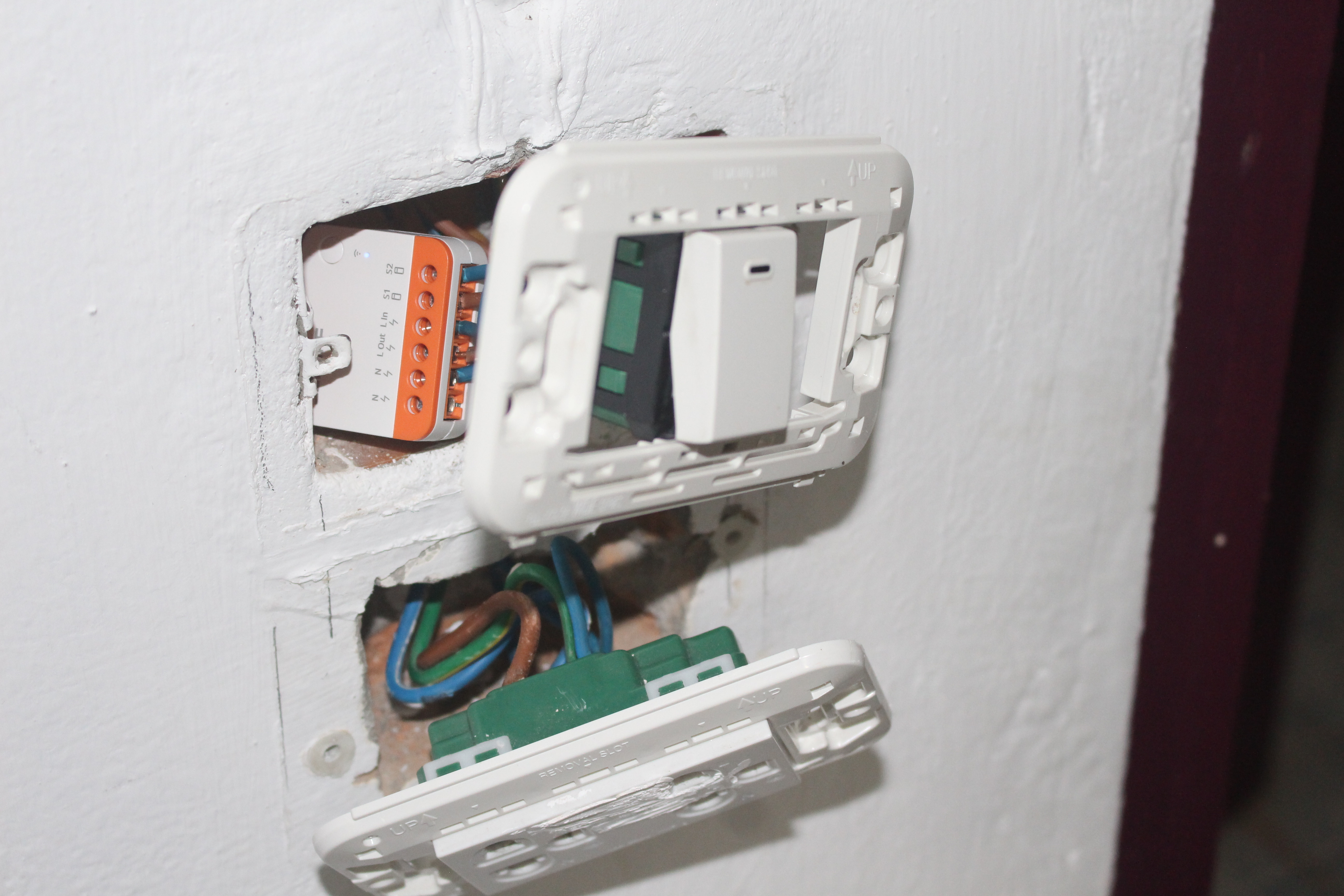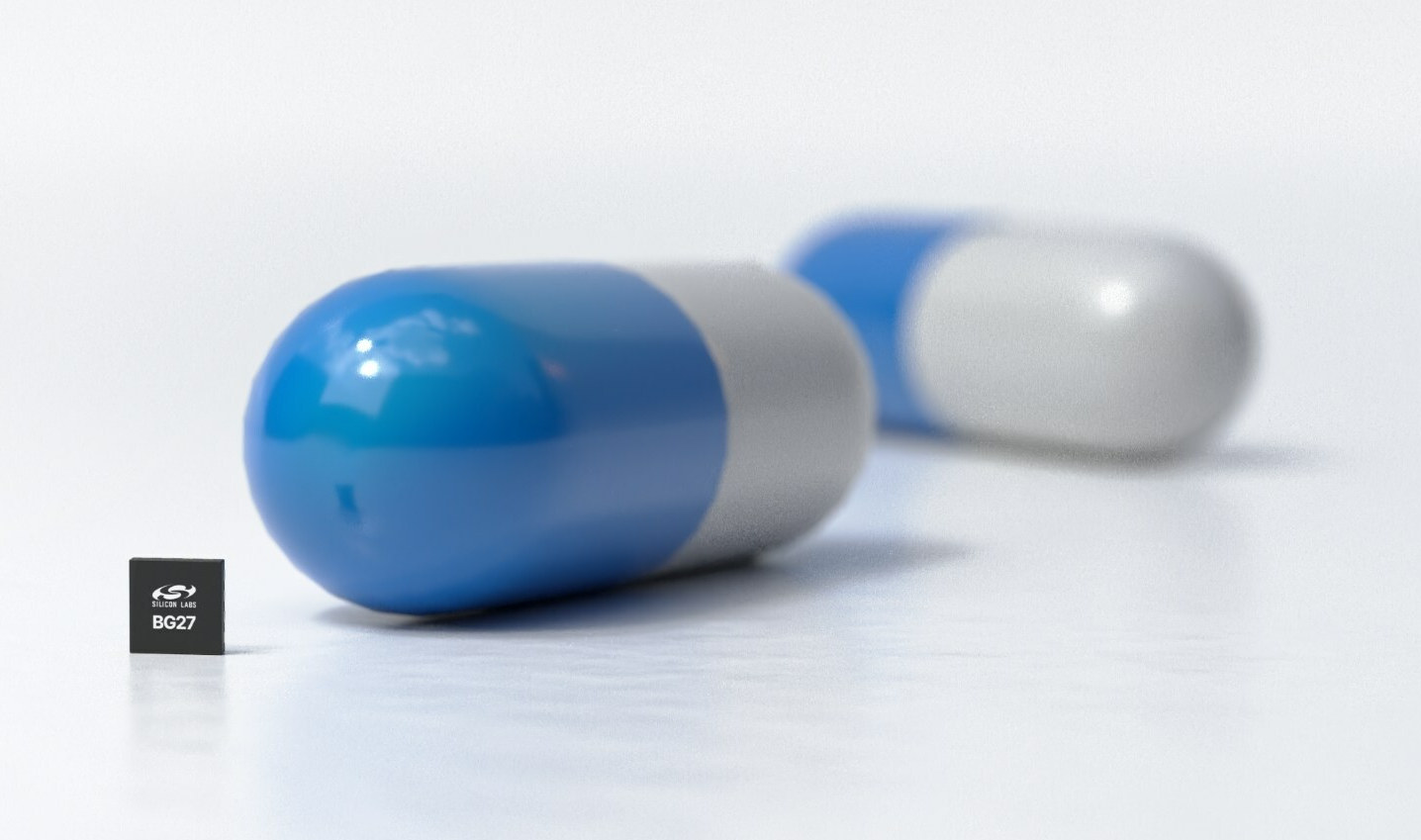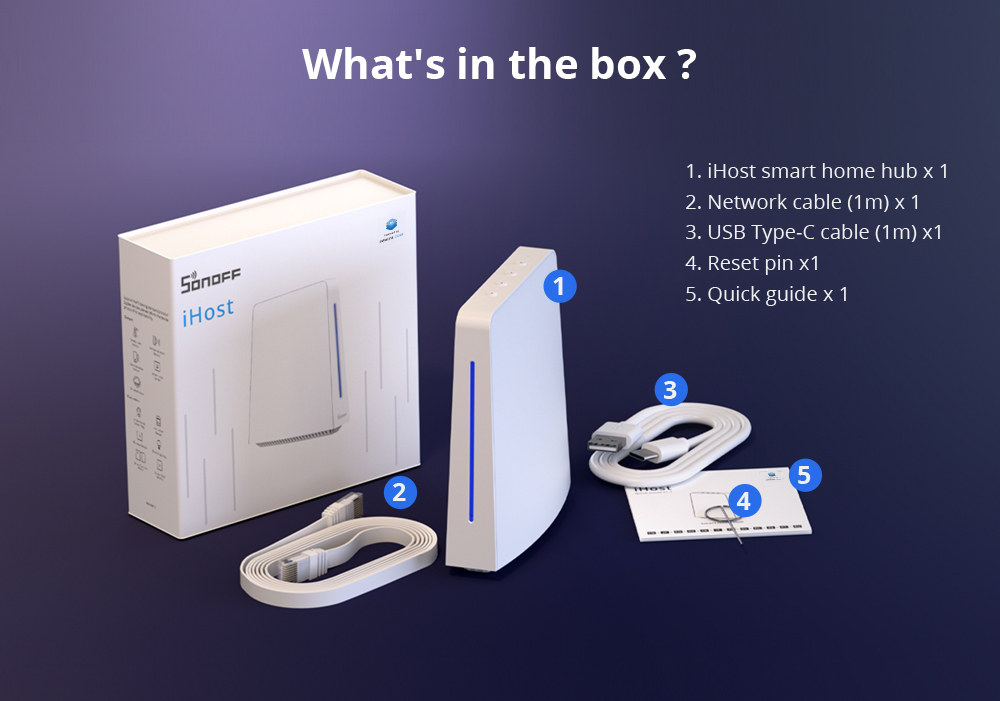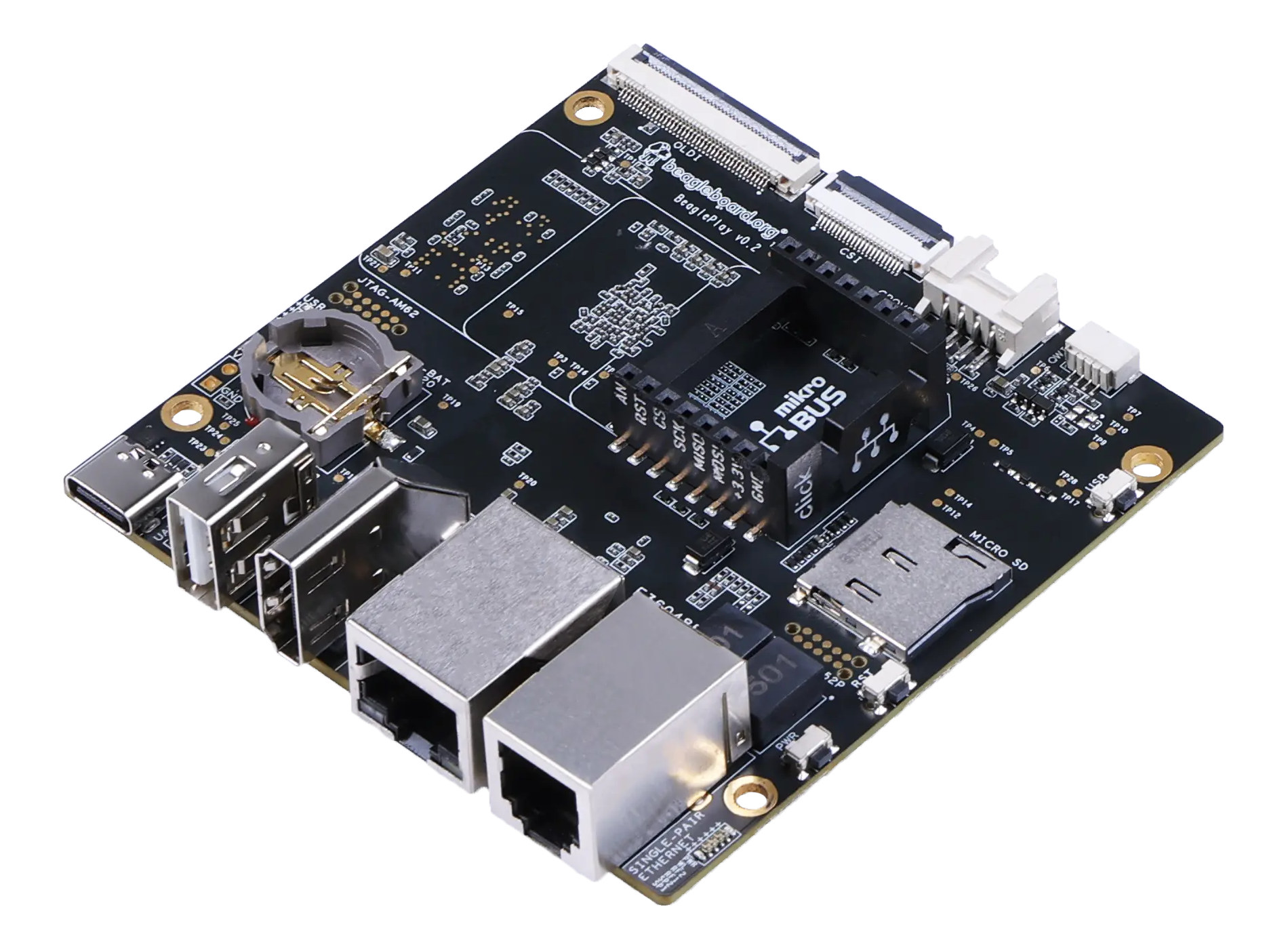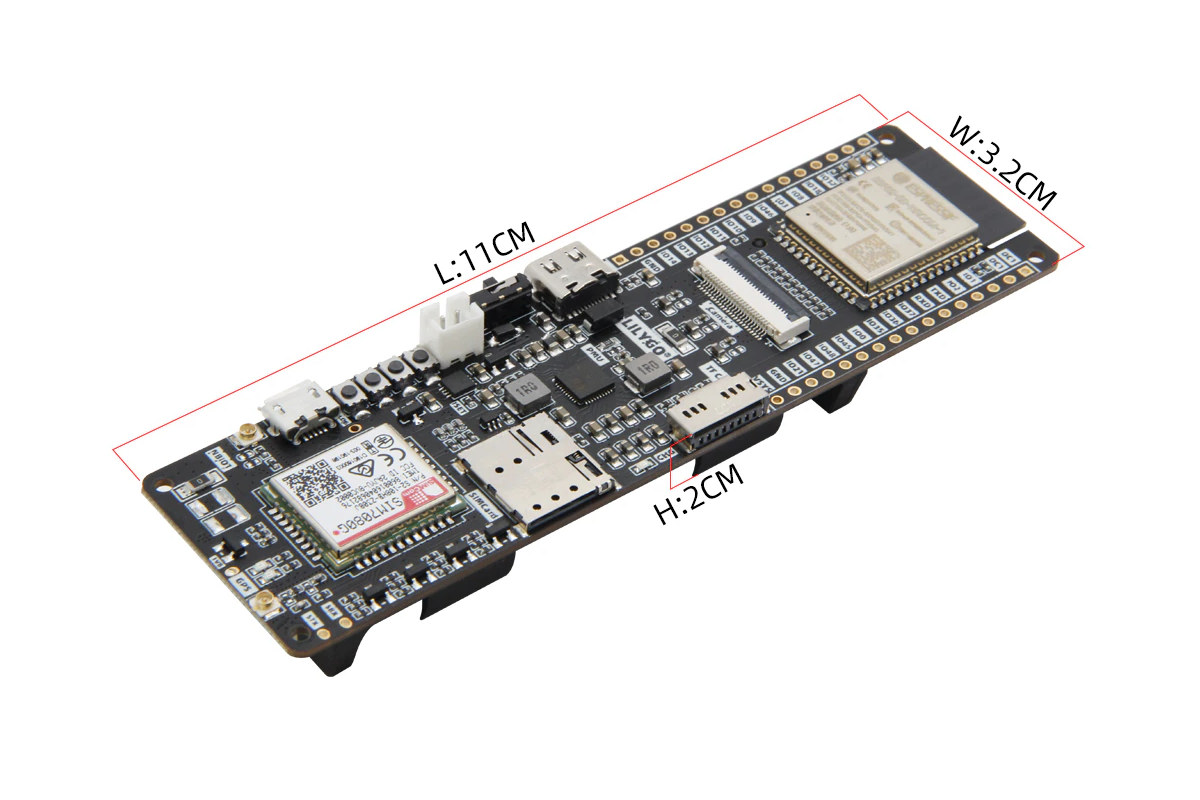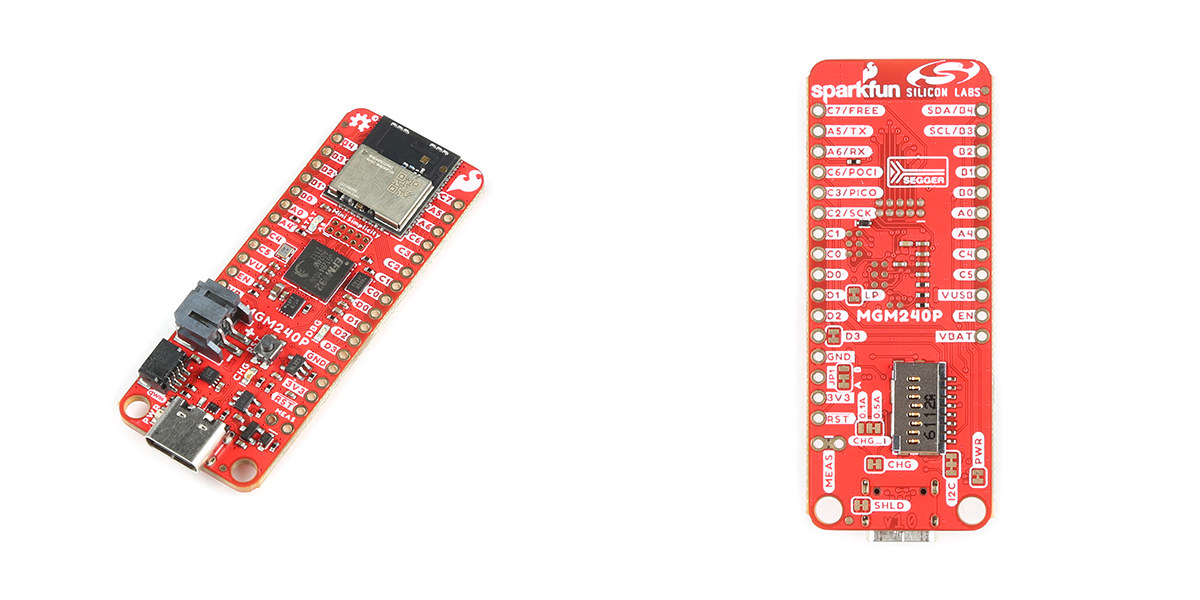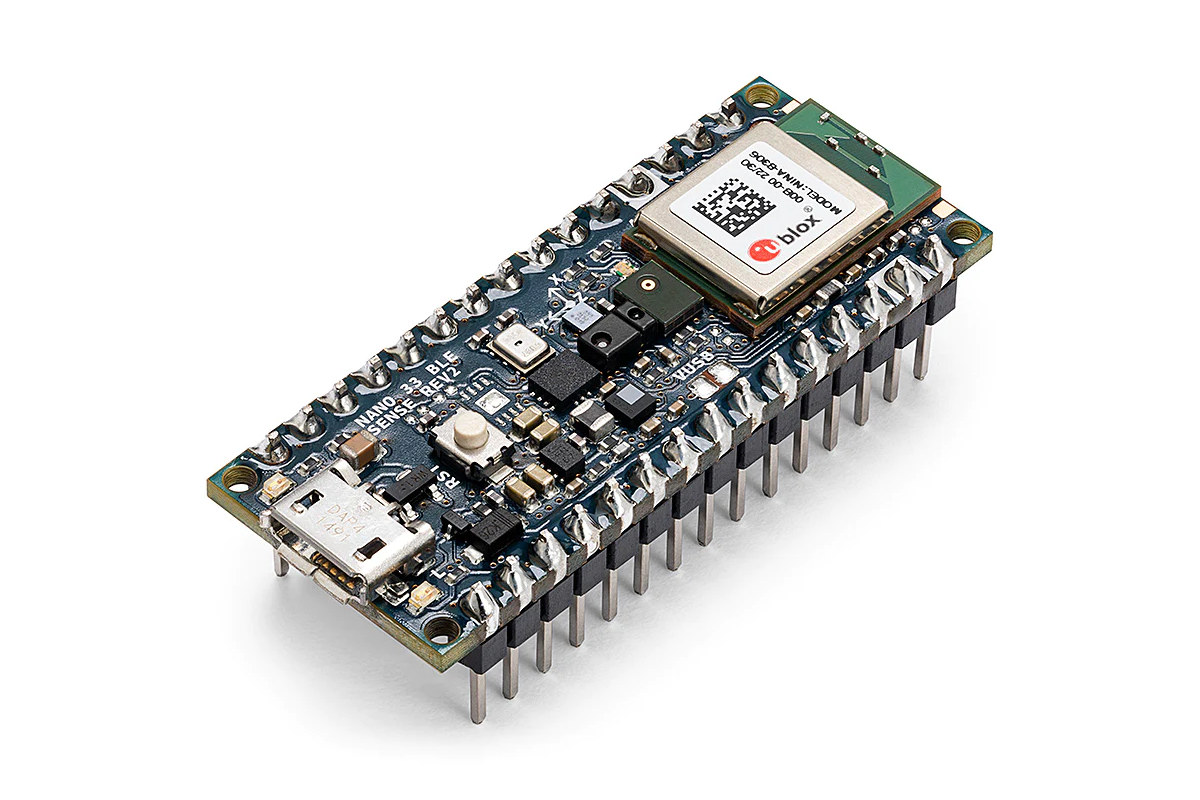In this post, we’ll review the SONOFF Mini Extreme, also known as MINIR4, WiFi smart switch based on ESP32 wireless MCU by installing it into a wall-mounted light switch box and controlling it with both the eWelink mobile app for Android and the SONOFF R5 scene controller. SONOFF MINIR4 Installation We’ve already gone through the specifications, unboxing, and teardown in the announcement, so I’ll get straight to the installation part. Note this review was done with a light switch “box” (about 11x6cm) in Thailand, so your mileage may vary. The first challenge is that contrary to the similarly-sized SONOFF ZBMINI Extreme Zigbee switch, the MINIR4 WiFi switch requires a neutral cable, and most lights in Thailand are wired without a neutral wire, so I had to get the neutral wire from the outlet switch box underneath. When I call those “boxes” there are really holes in the wall here… Wiring […]
Silicon Labs announces MG27 and BG27 Bluetooth LE & 802.15.4 SoCs for small devices, healthcare
Silicon Labs has just announced the tiny BG27 Bluetooth LE and MG27 multiprotocol wireless SoCs designed for small devices, and they will be especially useful in connected health applications, or the so-called Internet of Medical Things (IoMT), as well as wearables, sensors, switches, smart locks, and commercial and LED lighting. Both chips feature a Cortex-M33 core clocked at 76.8 MHz, up to 768KB flash, and up to 64KB RAM, but the BG27 only supports Bluetooth LE, Mesh, and propriety 2.4 GHz connectivity, while the MG27 also adds an 802.15.4 radio for Zigbee, OpenThread, and Matter protocols Silicon Labs BG27 and MG27 specifications: CPU – Arm Cortex-M33 @ 76.8 MHz with DSP instruction and floating-point unit Memory – Up to 64 kB RAM data memory Storage – Up to 768 kB flash program memory 2.4 GHz Radio BLE 5.3 Bluetooth mesh Proprietary 2.4 GHz MG27 adds Matter OpenThread Zigbee Modulation – […]
SONOFF iHost Smart Home Hub enables local control of SONOFF, Tasmota, Matter home automation devices
SONOFF iHost is a Smart Home Hub that enables local control of SONOFF smart switches, lightbulbs, Zigbee sensors, and so on without having to require a connection to the cloud (e.g. eWelink). Future software upgrades will also add more devices such as the ones flashed with Tasmota firmware and any device compatible with the Matter IoT protocol. The gateway is based on either a Rockchip RV1109 SoC with 2GB RAM or a Rockchip RV1126 with 4GB RAM and offers 10/100M Ethernet, WiFi, Bluetooth LE, and Zigbee 3.0 connectivity, as well as a USB 2.0 port to allow for more connectivity. SONFF iHost Smart Home Hub specifications: SoC and Memory Rockchip RV1109 dual-core Arm Cortex-A7 @ 1.5 GHz with RISC-V MCU @ 400 MHz, 2D graphics engine, 1.2 TOPS NPU, 5MP H.264 and H.265 hardware video decoder and encoder, and 2GB DDR4 Rockchip RV1126 quad-core Arm Cortex-A7 @ 1.5 GHz with […]
BeaglePlay – A $99 Texas Instruments AM625 industrial SBC with plenty of communication and expansion options
The BeagleBoard.org Foundation has just launched their latest single board computer with the BeaglePlay SBC powered by a Texas Instruments AM625 Cortex-A53/M4/R5 processor with 16GB eMMC flash, 2GB DDR2, and a wide range of I/Os, wired and wireless communication options, and support for expansion module compatible with MikroBus, Grove, and Qwiic connectors. Two wired Ethernet are offered, namely a typical Gigabit Ethernet RJ45 port, as well as a single-pair Ethernet RJ11 port limited to 10 Mbps but with a much longer range and power over data, and wireless connectivity includes dual-band WiFi 4, Bluetooth LE, and Sub-GHz. The board also features HDMI and MIPI DSI display interfaces and a MIPI CSI camera interface. BeaglePlay specifications: SoC – Texas Instruments Sitara AM625 (AM6254) with Quad-core 64-bit Arm Cortex-A53 processor @ 1.4 GHz Arm Cortex-M4F at up to 400 MHz Arm Cortex-R5F PowerVR Rogue 3D GPU supporting up to 2048×1080 @ 60fps, […]
IoT board supports WiFi, Bluetooth, NB-IoT, Cat-M and GNSS with ESP32-S3 and SIM7080G modules
LILYGO T-SIM7080G-S3 is an ESP32-S3 WiFi and Bluetooth IoT board with a SIMcom SIM7080G LTE Cat-M (eMTC), NB-IoT, and GNSS module for low-power long-range connectivity and asset tracking. The board also comes with a 18650 battery holder, a solar panel input, a microSD card slot, a camera port, and several I/Os and provides an alternative to the TTGO T-Beam ESP32 board that relies on LoRaWAN for long-range connectivity instead. LILYGO T-SIM7080G-S3 specifications: Wireless modules Espressif ESP32-S3-WROOM-1-N16R8 module with ESP32-S3 dual-core LX7 microprocessor @ up to 240 MHz with Vector extension for machine learning, 16MB flash, 8MB PSRAM, WiFi 4 and Bluetooth 5 LE/Mesh SIMCom SIM7080G global multi-band Cat-M and NB-IoT module with GNSS Bands: Cat-M – B1/B2/B3/B4/B5/B8/B12/B13/B14/B18/B19/B20/B25/B26 /B27/B28/B66/B85 NB-IoT – B1/B2/B3/B4/B5/B8/B12/B13/B18/B19/B20/B25/B26/B28 /B66/B71/B85 Data rate Cat-M – Uplink: 1,119 Kbps, downlink: 589 Kbps NB-IoT: Uplink: 150 Kbps downlink: 136 Kbps LTE RF Power Class: 5 (Typ. 21dbm) GNSS – GPS, GLONASS, […]
SparkFun Thing Plus Matter – MGM240P board supports Matter, Zigbee, OpenThread, and Bluetooth Low Energy 5.3
SparkFun Thing Plus Matter – MGM240P board targets the development of applications using the Matter IoT protocol and features the MGM240P module based on Silicon Labs EFR32MG24 Arm Cortex-M33 wireless microcontroller with an 802.15.4 radio for Zigbee and OpenThread plus a Bluetooth Low Energy (BLE) 5.3 radio. The board also offers two rows of I/Os for upto 21 GPIOs and a Qwiic connector for expansion, another EFRM32 MCU acting as a J-link debugger, a microSD card, and can be powered via USB-C or a LiPo battery. SparkFun Thing Plus Matter – MGM240P specifications: MGM240P wireless module SoC – Silicon Labs EFR32MG24 microcontroller CPU – 32-bit Arm Cortex-M33 @ 39 MHz (MCU/module specs say up to 78 MHz, but maybe it’s clocked lower in this board for some reason, maybe lower power consumption?) Memory/Storage – 1536kB Flash Memory, 256kB RAM Wireless – 802.15.4 wireless protocols (Zigbee and OpenThread) and Bluetooth Low […]
Arduino Nano 33 BLE Sense Rev2 switches to BMI270 & BMM150 IMUs, HS3003 temperature & humidity sensor
Arduino Nano 33 BLE Sense Rev2 is a new revision of the Nano 33 BLE Sense machine learning board with basically the same functionality but some sensors have changed along with some other modifications “to improve the experience of the users”. The main changes are that STMicro LSM9DS1 9-axis IMU has been replaced by two IMUs from Bosch SensorTech, namely the BMI270 6-axis accelerometer and gyroscope, and the BMM150 3-axis magnetometer, a Renesas HS3003 temperature & humidity sensor has taken the place of an STMicro HTS221, and the microphone is now an MP34DT06JTR from STMicro instead of an MP34DT05. All of the replaced parts are from STMicro, so it’s quite possible the second revision of the board was mostly to address supply issues. Arduino Nano 33 BLE Sense Rev2 (ABX00069) specifications: Wireless Module – U-blox NINA-B306 module powered by a Nordic Semi nRF52840 Arm Cortex-M4F microcontroller @ 64MHz with 1MB […]
Sparkfun NanoBeacon low power Bluetooth 5.3 beacon module supports Bosch BME280 and BMA400 sensors
Sparkfun NanoBeacon is a module equipped with InPlay IN100 NanoBeacon Bluetooth 5.3 beacon SoC, a Qwicc connector, and a few GPIOs designed to work with Bosch Sensortec BME280 3-in-1 humidity sensor, measuring humidity, air pressure, and ambient temperature, and the BMA400 ultra-low power accelerometer sensor. The IN100 NanoBeacon SoC consumes less than 650nA in sleep mode, supports proprietary, Bluetooth, Google Eddystone, and Apple iBeacon beacon modules, and offers a long range of up to several hundred meters. Sparkfun NanoBoard specifications: Bluetooth Beacon SoC – IN100 NanoBeacon SoC (See datasheet for details) Memory – 4 KB SRAM + 4 Kbit OTP memory Bluetooth 5.3 compliant Beacon Modes: Proprietary, BT, Google Eddystone, and Apple iBeacon compliant 2.4GHz RF frequency band, MedRadio band (2.36GHz) Programming-free and firmware-less design Long-range transmission: up to several hundred meters Security Authentication of beacon ID Privacy of advertising payload Power consumption Sub-uW power consumption for multi-year operation on […]


